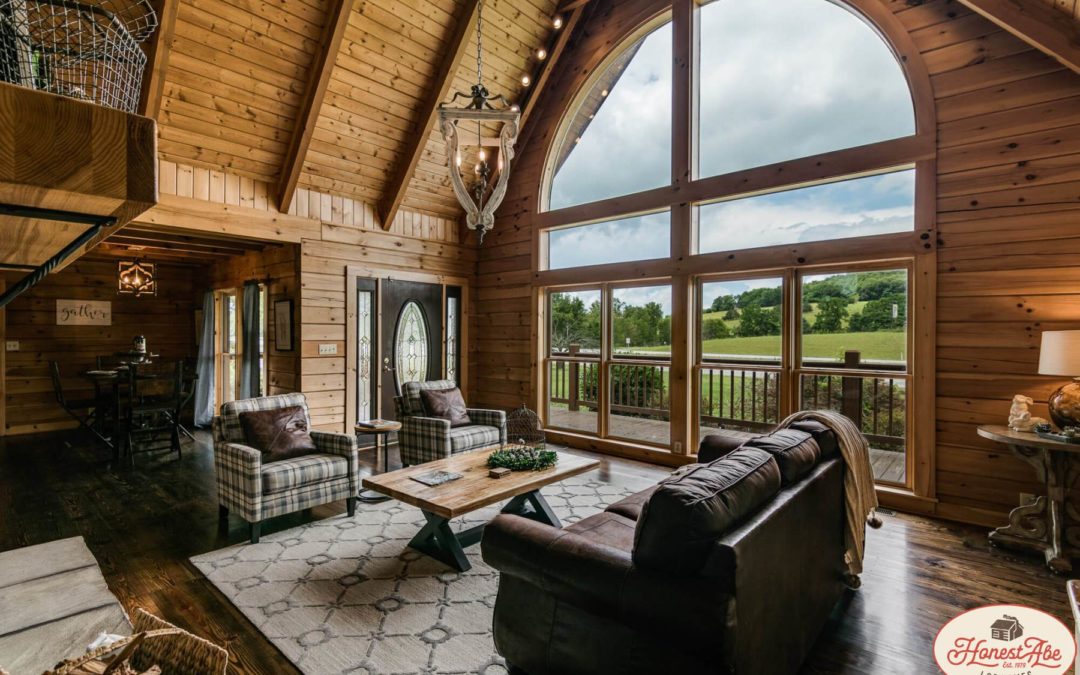When summer heat hits, keeping your log cabin cool can be a challenge. While the thick wooden walls of a log cabin provide some natural insulation, they can still get pretty warm. Here are some practical tips to help you keep your log cabin comfortable during the hot summer months.
Natural Ventilation
Take advantage of natural ventilation by opening windows and doors during the cooler parts of the day, like early morning and late evening. This helps fresh air circulate through your cabin. Create a breeze by opening windows on opposite sides of your home. When it comes to using air conditioning, the average temperature to set thermostats in summer is around 78°F (25.5°C) when you’re at home. This temperature is a good balance between staying cool and saving energy. When you’re away, you can set it a bit higher to conserve energy.
Reflective Roofing
The type of roof on your log cabin can make a big difference in how hot it gets inside. Reflective roofing materials, like metal or specially coated shingles, reflect more sunlight and absorb less heat. This helps keep your cabin cooler and reduces the need for air conditioning. If replacing your roof isn’t an option, you can also apply reflective coatings or white paint to your existing roof to achieve a similar effect.
Smart Landscaping
Landscaping can help keep your cabin cool. Planting trees and shrubs around your property can provide natural shade and reduce heat. Deciduous trees are particularly effective, as they provide shade in the summer and allow sunlight through in the winter when they lose their leaves. Placing plants near windows can block direct sunlight, while ground cover plants can also cool the air around your cabin by releasing moisture into the air through transpiration. Additionally, consider installing a green roof or wall, which can provide additional insulation and cooling benefits.
Ceiling Fans
Ceiling fans are great for circulating air and making rooms feel cooler. Make sure your ceiling fans rotate counterclockwise in the summer to push cool air down. This creates a wind-chill effect that can make the room feel several degrees cooler. You can also use directional fans to target specific areas that need more cooling. Placing a box fan in a window to blow out hot air while another fan draws in cooler air from a shaded area can be very effective in creating a cross-breeze that ventilates your entire cabin.
Nighttime Cooling
Use cooler nighttime temperatures to your advantage. Open windows and use fans to draw in fresh, cool air. This can help lower the indoor temperature and give your air conditioning a break. In the morning, close the windows and blinds to keep the cool air inside and block out the heat. Heavy curtains or blackout shades can also help prevent the morning sun from quickly warming up your cabin.
Humidity Control
High humidity can make your cabin feel hotter. Using a dehumidifier can help remove excess moisture from the air, making your home feel cooler. Proper ventilation, especially in the kitchen and bathroom, is also important to prevent humidity buildup. Consider using exhaust fans in these areas to expel hot, moist air and reduce overall humidity levels.
Breathable Fabrics
Choosing the right fabrics for your cabin’s interior can make a big difference. Opt for breathable, lightweight fabrics like cotton or linen for bedding, curtains, and upholstery. These materials allow air to circulate more freely and help keep your cabin cooler. Additionally, light-colored fabrics reflect more sunlight than dark ones, further helping to keep your indoor spaces cool.
Appliance Usage
Appliances can generate a lot of heat, making your cabin warmer. Try to limit the use of heat-generating appliances, like ovens, during the hottest parts of the day. Instead, use a microwave, slow cooker, or outdoor grill for cooking. Also, make sure your appliances are energy-efficient and well-maintained to minimize heat production. Unplugging electronics and appliances when not in use can also help reduce the amount of heat they generate.
Insulation Upgrades
Good insulation is key to keeping your log cabin comfortable. While logs are naturally good insulators, adding extra insulation can help even more. Sustainable insulation options like cellulose or sheep’s wool are eco-friendly and effective. Upgrading insulation in the roof and walls can keep the heat out and the cool air in. Don’t forget to insulate your attic and basement, as these areas can be major sources of heat gain if not properly insulated.
Regular Maintenance
Regular maintenance of your cabin’s cooling systems is essential. Clean or replace air filters in your air conditioning unit regularly to ensure it runs efficiently. Check for any leaks in ductwork and seal them to prevent cool air from escaping. Routine maintenance can help your cooling systems work better and last longer, ensuring your cabin stays comfortable throughout the summer.
Solar Solutions
Solar solutions offer sustainable ways to cool your log cabin. Solar-powered fans and ventilators can help expel hot air and improve ventilation. Installing solar panels can reduce your reliance on traditional power sources and lower your energy bills. Solar screens or films on windows can also block out a lot of heat. Additionally, solar water heaters can provide hot water without adding heat to your living spaces, further enhancing your cabin’s energy efficiency.
Summer Heat Doesn’t Have To Be A Challenge
Whether your cabin is in a hot area, or you’re simply wanting to keep things cool, these tips can make a huge difference. Consider checking out Honest Abe for more ideas on how to keep your property comfortable.
Author Bio:
Natalie Akins is a freelance writer that loves sharing her knowledge and expertise in interior design and remodeling. She also has a background in the Hospitality and Real Estate Industry. She lives in her hometown of Austin, Texas where she enjoys spending time with her husband and decorating with her children. Natalie’s work as a freelance writer can be found on Building Product Advisor, a new construction industry resource site.




